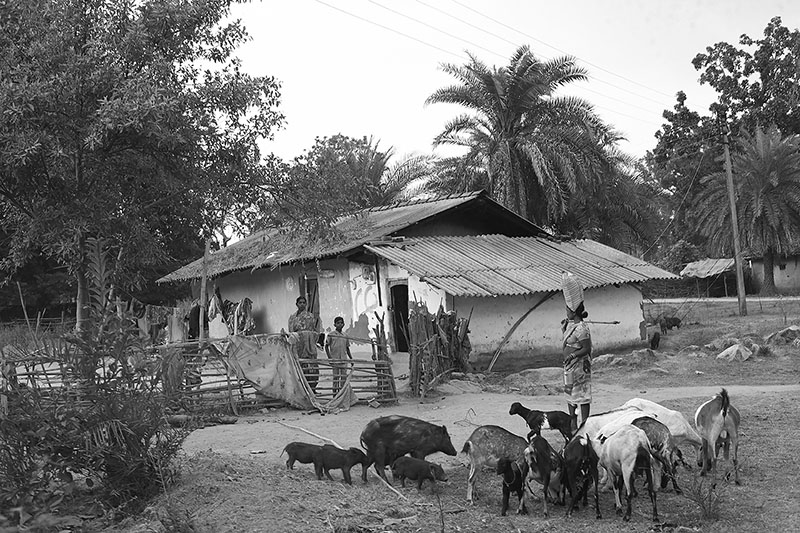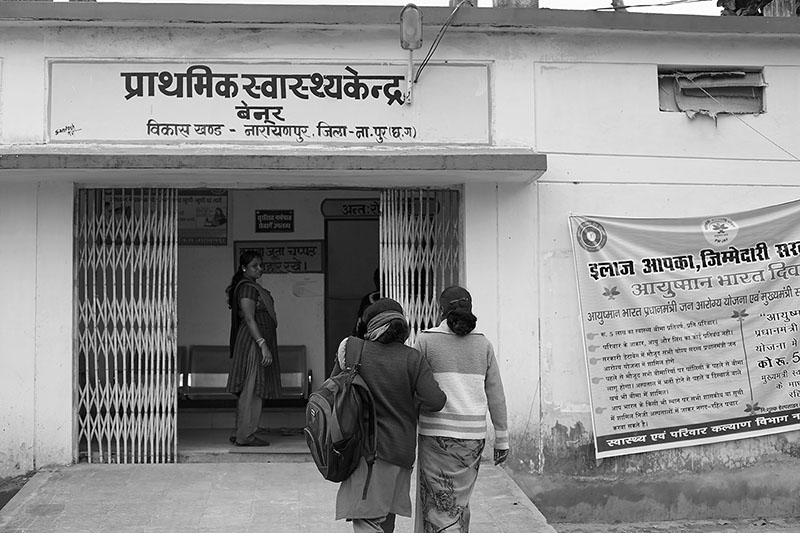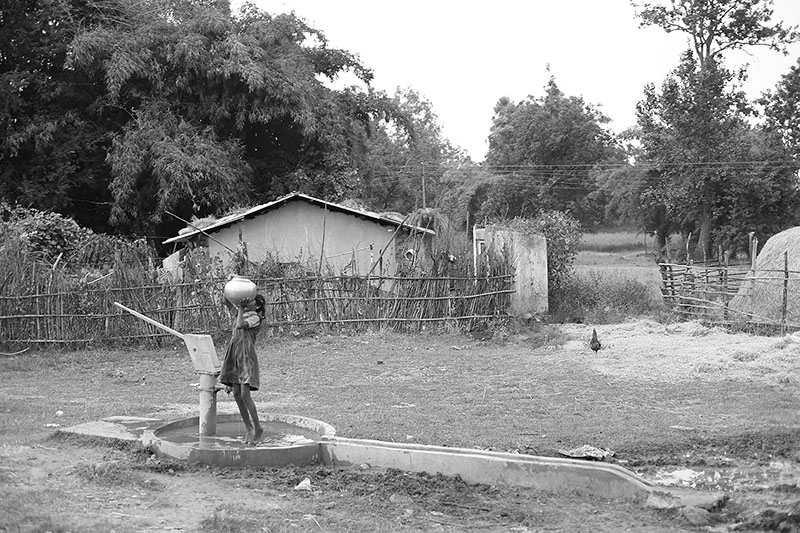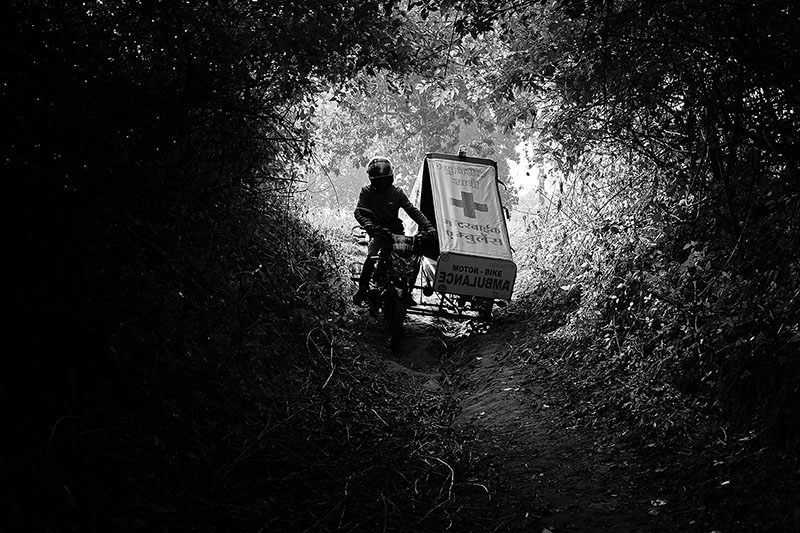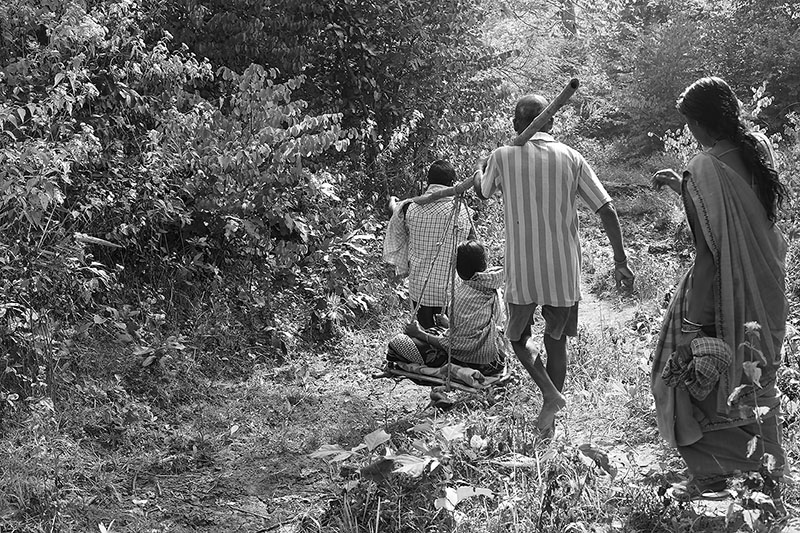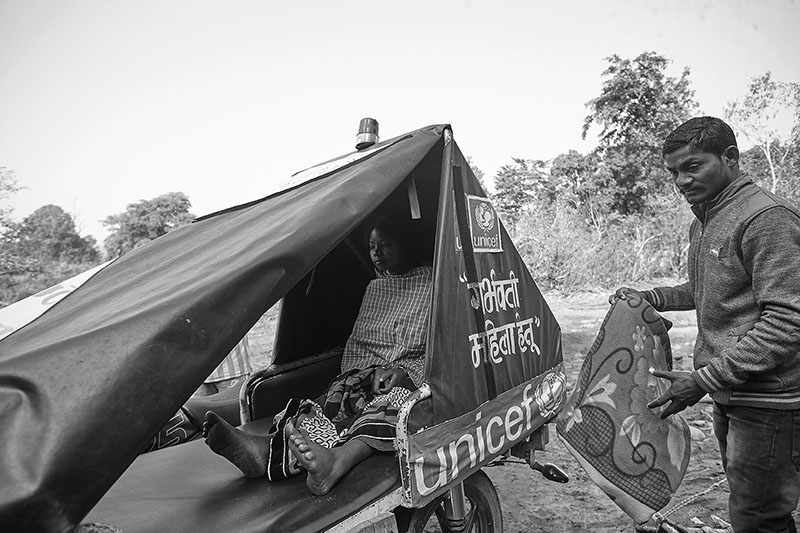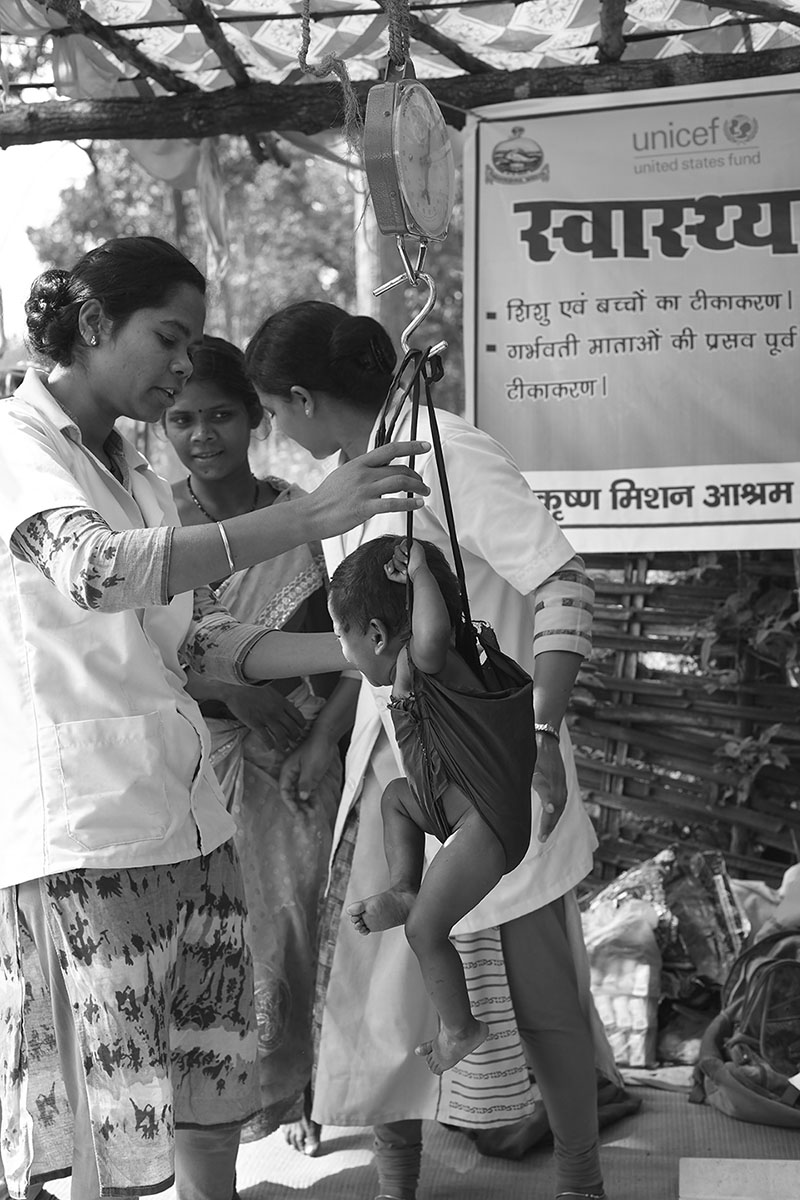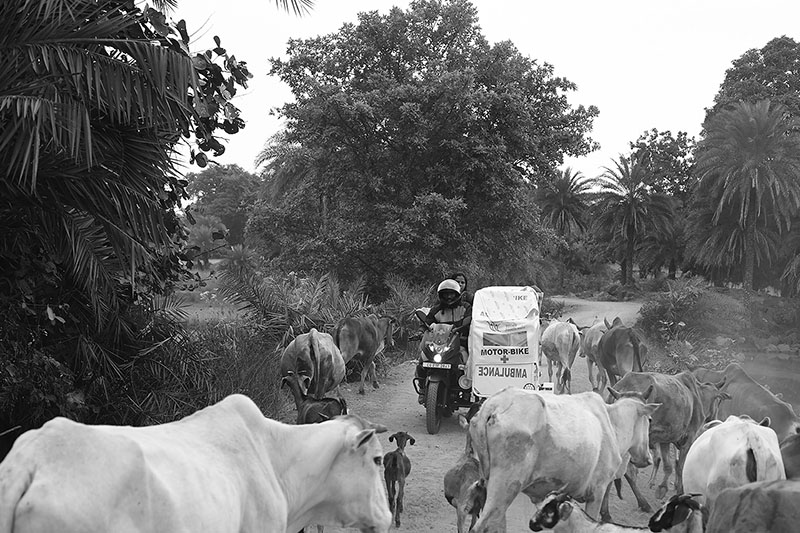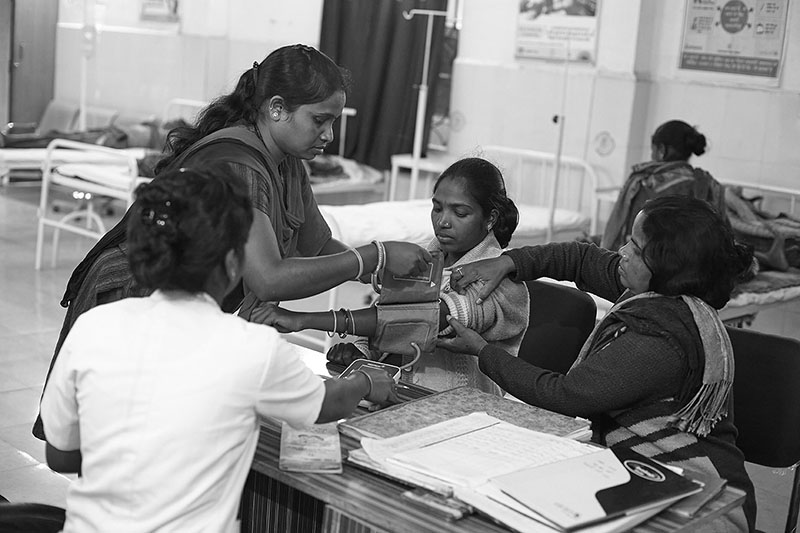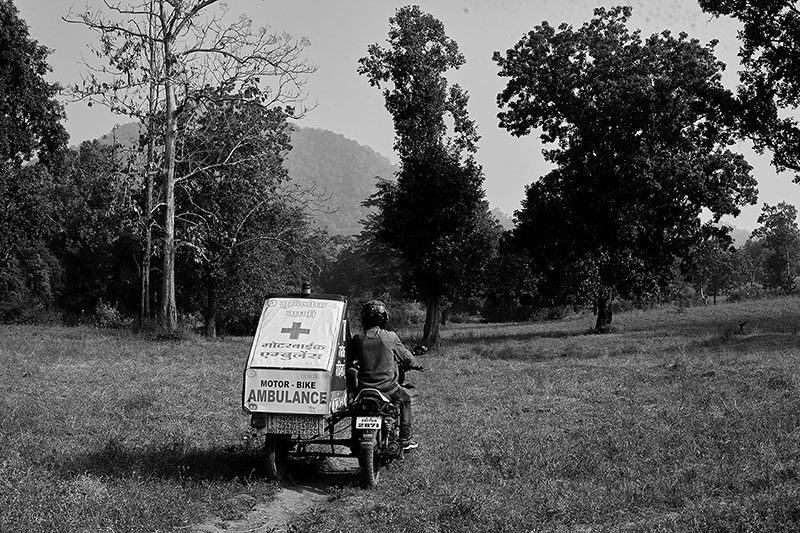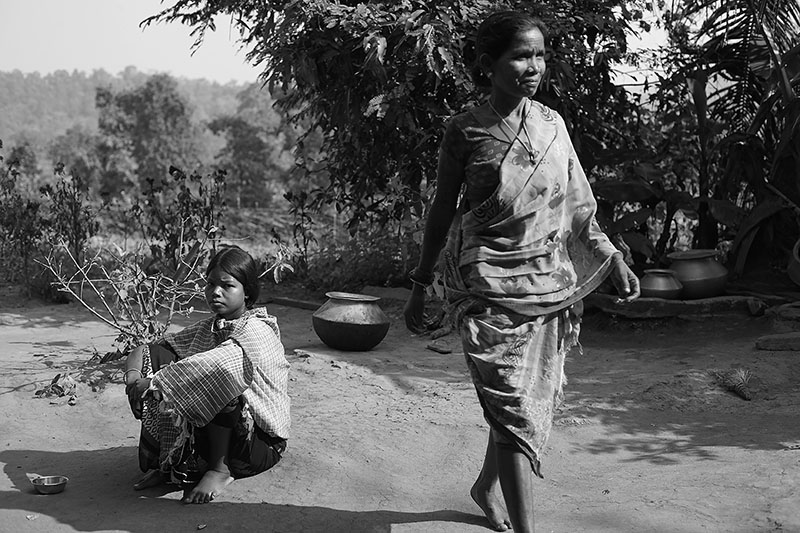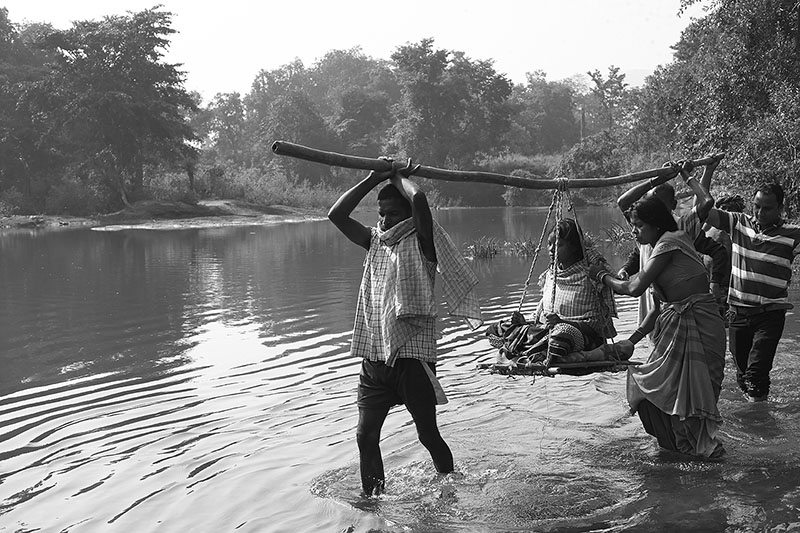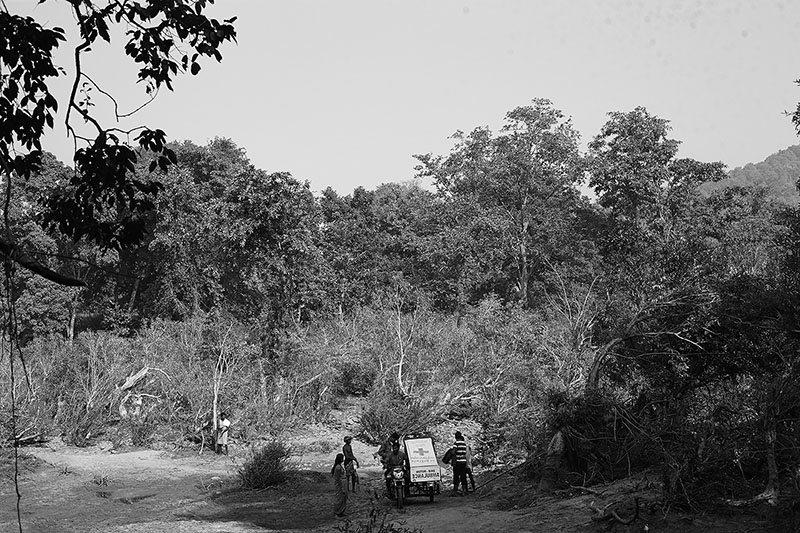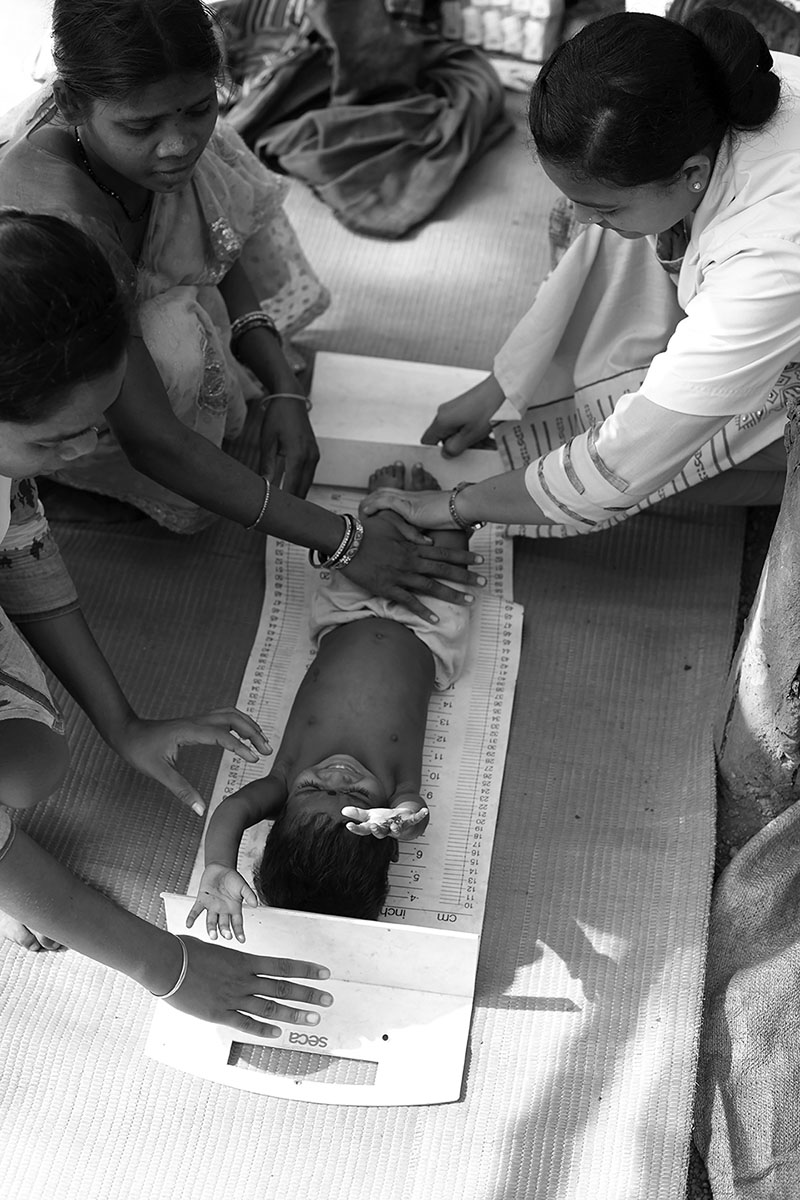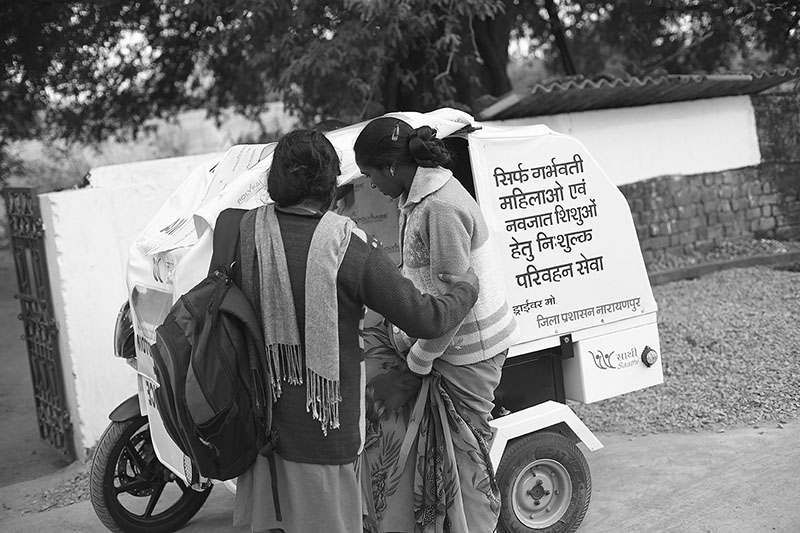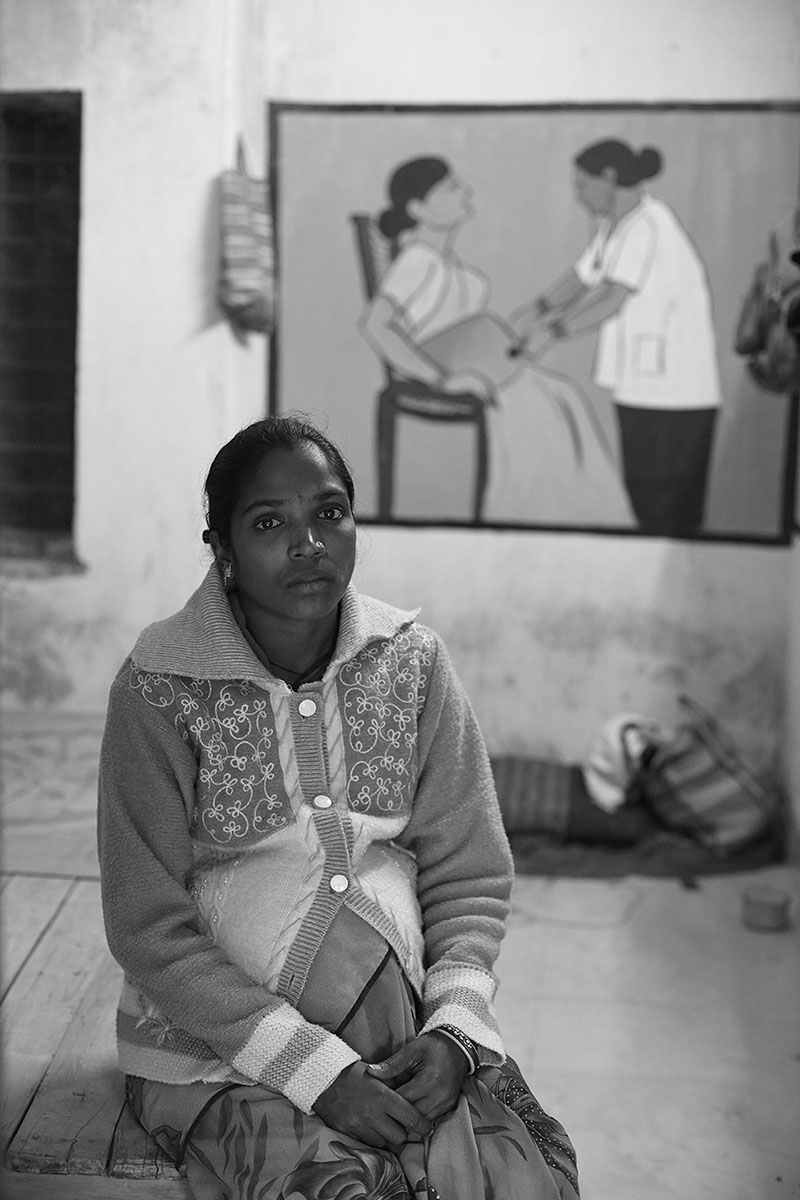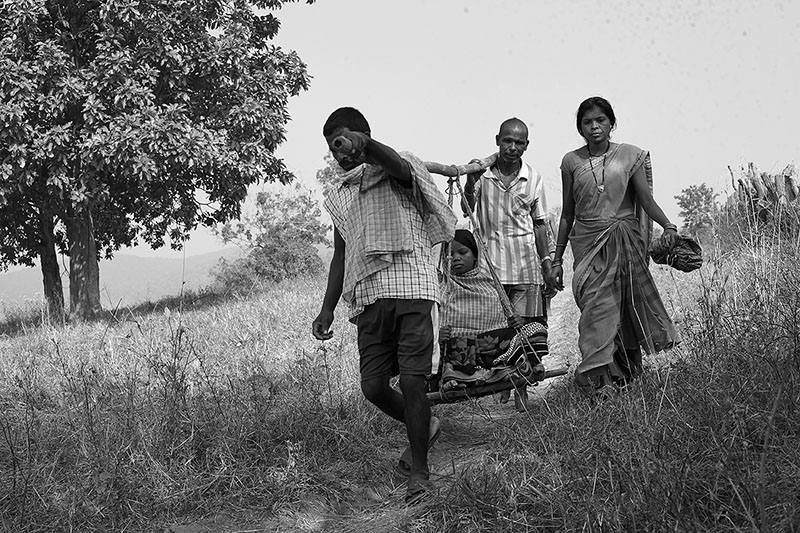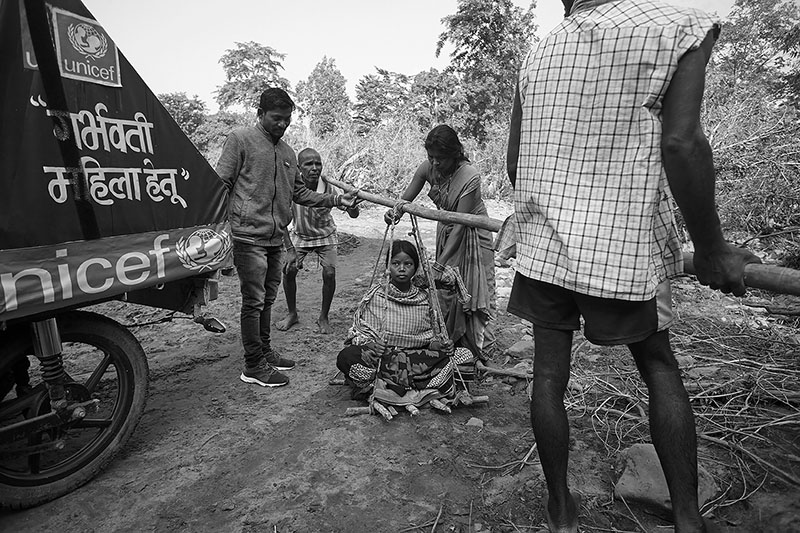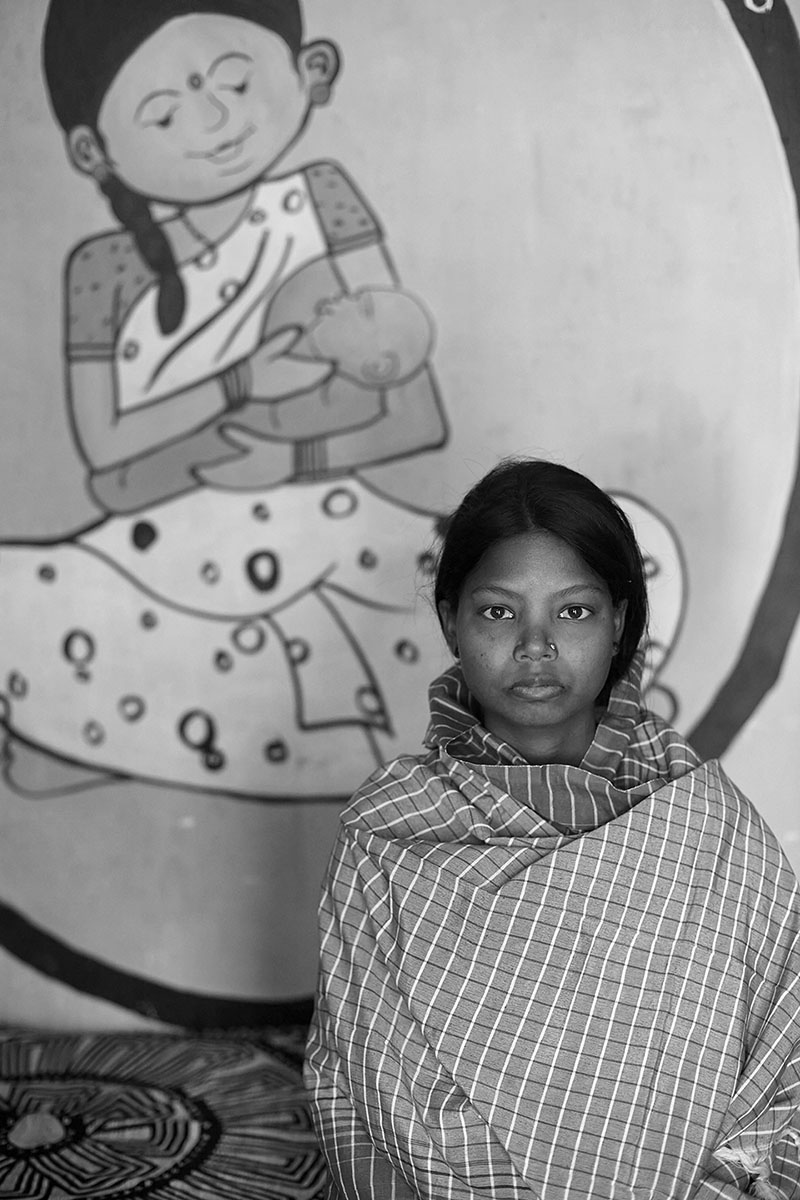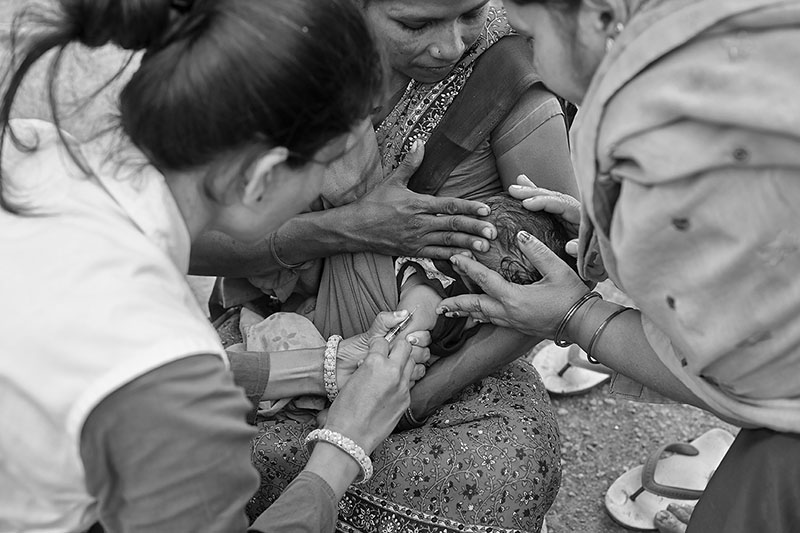Motorcycle Ambulance
The Narayanpur district in the central-eastern Indian state of Chhattisgarh is surrounded by dense forests, hills, streams, and natural caves.
About 1,000 sq km of the district, which is about 186,873 football fields, is forest. Tribal communities comprise more than 77 percent of the total population of the district, and they live in sparsely scattered settlements, usually having only 20 inhabitants per sq km. The topography of the region presents a huge challenge not only for the distribution of health services but also for mothers, fathers, parents, and families to avail of transport services. With UNICEF support, now-modified four-stroke motorcycles, which work as a ‘motorbike ambulance’, are proving to be a boon for the people of the region, bridging the last mile to health care. The motorcycle ambulances ferry patients, pregnant women, and infants from remote areas to the nearest primary and community health centres (CHCs) and have emerged as a lifesaver for the people of the region. These ambulances are fitted with a sidecar for the comfort of the patient and are equipped with medicines and a functional first-aid kit to meet emergency needs. The ambulances are operated by skilled drivers who are adept at providing first aid. The concept has already seen much success in African countries. The free service assumes significance for a country like India, where the maternal mortality rate (MMR) is 122 per 100,000 live births, many of whom can’t get to the hospital in time. The initiative has significantly contributed towards bringing the MMR in the state down to 141 from 173 per 100,000 live births in 2014–2016 and also helped raise the number of institutional deliveries.
Narayanpur District, Chhattisgarh, India, 2019.

